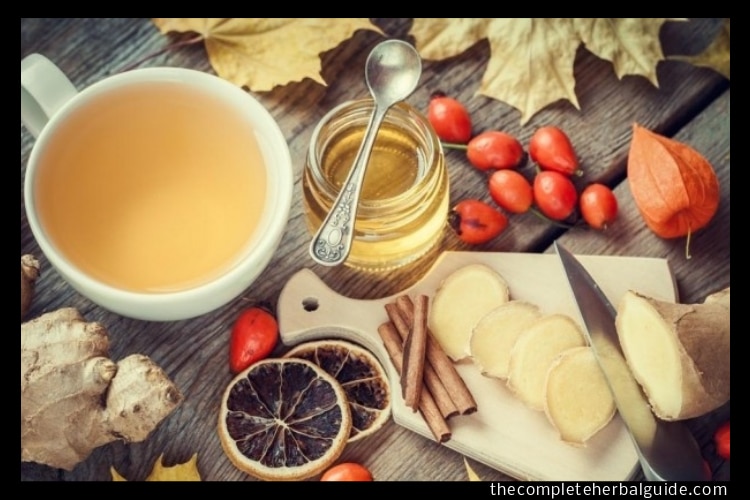
13 Remedies to Get Rid of Headaches Naturally
Table of Contents
Get moving
An aching head does not inspire one to get active, but getting up and moving outside in fresh air if possible- can help loosen up tight muscles causing a headache. It also gives you something to focus on to take your mind off the pain. Good exercise also releases endorphins, which can dull the uncomfortable sensation caused by a headache. To get the most out of your activity, keep in mind the following tips.
Stay regular
Exercising only when you feel like it is less likely to prevent headaches then exercising on a regular basis. Routine also gives your body just that routine. Routine helps us function, at least physically, better than we might if we didn’t have any.
Take your time getting yourself warmed up and properly cooled down. Jumping into strenuous activities and then abruptly stopping is more likely to cause a headache then stop it.
Enjoy the outdoors
If possible, exercise outside. The invigorating fresh air and change of scenery do something that just makes our bodies and minds feel good.
There are some small-scale studies that show the ingestion of fish oil can help reduce migraines and head pain, thanks to its omega-3 fatty acids, which promote heart health. The American Heart Association states that the ingredients in fish oil may help reduce inflammation, blood clotting, lower blood pressure, and steady heart rhythm. Those actions, in turn, may help reduce head pain because it may reduce the inflammation of blood cells that press and pinch on nerves.
You will need it…
- 1 tablespoon of fish oil OR fish oil oral supplements
- 1 glass of orange juice
Directions
If you are taking fish oil capsules, follow the dosing on the bottle. If using the actual oil, mix a tablespoon into a glass of cold orange juice and drink up! It’s really not as bad as it sounds.
Hot or cold?
Headaches are tricksy little things, with what clears them up for one person totally triggering them for another. There’s evidence to support both hot and cold compress treatments, and it all has to do with the muscles and blood vessels. Some headaches are caused, at least in part, by an expanded blood vessel pressing on nerves. For these, applying something cold to the area can constrict those vessels and relieve some of the pressure causing the throbbing ache. Other headaches are caused by tension and anxiety, and cold tends to tighten up muscles that then pinch nerves and enlarge blood vessels. You’ll have to play around to see if you’re someone who benefits from cold/ cool treatment or hot/warm, while some people find alternating between the two works best.
You will need it…
- Cold compress, such as a bag of frozen peas, a bag of ice, or a cold pack.
- Hot compress, such as a towel soaked in very warm water.
Directions
Find a quiet place to lie down, preferably where you can dim the lights or turn them off. Place the cold or hot compress on your forehead and relax. At some point, try switching to the back of your head, or the top, depending on where the pain is concentrated. You can also try a cold compress at one location and a hot compress on another, either on your head, or place the hot compress on your shoulders if your headache is from tension. Do this for as long as you feel you need to. Try sipping fresh water through a straw if you can manage during or after the treatment, and make sure to ease back into your daily routine-don’t just dash onto a crowded street in blinding sunlight.
Tip: Here’s how to make a good hot compress at home that won’t least its heat as quickly as a warm washcloth.
Avoid MSG
Monosodium glutamate (MSG) is added to food to enhance its flavor. It is derived from an amino acid, called glutamic acid, which occurs naturally in various foods. Many people who suffer headaches find that foods containing MSG trigger migraines or other types of headaches, possibly due to the fact that it excites our neurons. Make sure you read food labels to check if the product has MSG, the FDA is requiring companies to list it, however, it can also be hidden as a component of other ingredients. Watch for some of these words, which can give away “hidden” MSG, and be extra cautious around Chinese food, processed meats, canned veggies, gravy/soup/dip mixes, and soy-based items.
- Gelatin
- Yeast extract
- Anything “hydrolyzed”
- Textured protein
Improve your posture
Improving your posture can make all the difference in the world when it comes to tension-type headaches. Many of us spend our days working in an office or sitting down at a computer with little to no movement, and many of us are guilty of poor posture. We slouch, slump, and hunch forward, which strains our muscles and creates nasty headaches. Try using an ergonomic chair if you’re sitting down a lot, and make a conscious effort to sit up tall but relaxed, with your shoulders back, your chest open, and your neck not sticking too far forward. Working on strengthening core muscles helps a lot with posture since balance and the strength to support ourselves properly comes from mostly from our center.
Use your imagination
Mental imagery has been shown to reduce headaches, whether mild or severe, by helping people relax and loosen up the knots that may be causing the pain. There are guided imagery coaches, but you can also do this on your own. Imagery exercises create a “mental escape” that is calm, peaceful, and pain-free your happy place if you will. To work on your ‘scape, try the following.
The following…
Find a quiet place to close your eyes and use your mind to fill your head with something other than pain. Picture rolling hills or waves lapping over sand, even just creating a landscape of soothing colors can be helpful. Try adding a quiet soundtrack to this exercise; be it sounds of nature or just a soft song that calms you down. Breathe and be patient. Also, be patient. And then be a little more patient. Don’t get worked up because your headache isn’t gone after you spent 30 seconds impatiently picturing a tree, this stuff takes practice and some dedication (and patience) but it’s worth it.
Munch on gingerroot

Prostaglandin synthesis is a process that takes place in some animals (including humans) that make lipid (fat) compounds within their cells. Those fatty substances are like little chemical messengers that mediate biological processes, like inflammation and alerting neurons to pain. Certain enzymes spark off the prostaglandin synthesis, while some drugs, such as aspirin, inhibit the synthesis. Gingerroot, a natural alternative, is thought to inhibit the synthesis as well. On top of that, if you’re getting knocked with a migraine, it can help quell your nausea. Simply sip a nice steaming cup of ginger root tea and relax while you wait for your headache to ease up.
You will need it…
- 3 quarter-size slices of ginger root
- 2 cups of water
Slice 3 slices off of a piece of raw ginger root, with each being roughly the size of a quarter. Gently simmer the pieces of ginger in 2 cups of water, covered, for 30 minutes. Use something to remove the pieces of ginger and transfer to a mug, or if you prefer, leave them in. Sip slowly and breathe in the steam if you want. Relax!
Apply peppermint oil
Peppermint oil has a wonderfully soothing effect when you’re suffering from a headache, easing the discomfort and clearing your mind. It can be applied to various places, and people who use it find that it works quickly to relieve pain. If you have sensitive skin and find that it irritates it, try diluting it with a bit of olive oil or water.
You will need it…
- Peppermint oil
Massage the peppermint oil onto your temples, the back of your jaw, and forehead. You will feel a cooling sensation upon applying it. Breathe deeply, and if possible, find a quiet place to relax and sip some cool water.
Butterbur for Migraines
Butterbur refers to plants found in the daisy family. Long used by Native Americans as a remedy for headaches and inflammation, Butterbur has gained more and more credit lately in the world of western medicine, and the American Academy of Neurology and American Headache Society both endorse butterbur for preventing migraines based on at least two strong clinical trials. It is thought to be effective because some Butterbur species contain chemicals that work in two ways, one in which inflammatory effects of certain chemicals are lowered, and the other being that it functions as a natural beta-blocker, which results in a normal flow of blood to the brain. That, in turn, can help control blood pressure/the spasmodic capillary action that can cause migraines. The highest concentration of the plant’s helpful chemicals is found in Butterbur root.
Please Note: The usual adult dosage is 50-100 milligrams twice daily to help reduce the severity of migraines/ prevent them, but check with a healthcare practitioner before using butterbur as a migraine treatment. Look for a brand of extract labeled PA-Free, which ensures that it was safely processed to remove potentially harmful, toxic, chemicals found naturally in the plant.
Eat less chocolate
Pretty straightforward-chocolate and the caffeine it contains make it a common trigger for headaches in many people.
Know your facts about B3
Vitamin B3, also known as niacin, is a water-soluble B vitamin that may trigger vascular headaches, thanks to something called a “flush.” Niacin dilates (opens up) the body’s blood vessel, right down to the small capillaries, which increases blood flow. While it can be helpful in some cases, it may cause a headache triggered by the pounding blood flow and possible nerve pressure caused by it. It’s best to talk to a healthcare practitioner about B3 to know how you should properly take, or if it will be helpful.
Grab a pencil
Holding a pencil between your teeth (holding, not biting or clenching your jaw) can help a tension headache dissipate. The actual physical act of holding the pencil between your teeth activates your “smile” muscles, relaxing your jaw. We often times clench our teeth when stressed and this, in turn, strains the muscle connecting the jaw to the temples and causes a tension headache. Again, make sure your jaw is relaxed and the pencil is held lightly between your teeth.
Drink up
On average we don’t drink enough water daily, and that alone is cause for a headache. Coffee, alcohol, sugary drinks all can dehydrate you (hence the pounding headache that comes along with a hangover) and should be avoided. As soon as your head starts to hurt, drink a tall glass of water, and then sip throughout the day. Gradually the pain will start to ease up, and you’ll be hurting less and well-hydrated to boot. Simply drinking water may seem too obvious or simple to actually work as a headache remedy but it can, and often time does. We humans often just seem to feel the need to make things more complicated than they are.
You use your head for a lot of things, maybe not all things, but hopefully for a lot of them, and throbbing pain in your noggin can really make it hard to function. While over-the-counter pain killers may temporarily relieve the discomfort, they’re not going to prevent headaches from returning full force or worse- in the future. Give some headache home remedies a shot, and you’ll end up saving yourself a headache (probably lots of headaches) in the future.
 By Claire Goodall
By Claire Goodall






